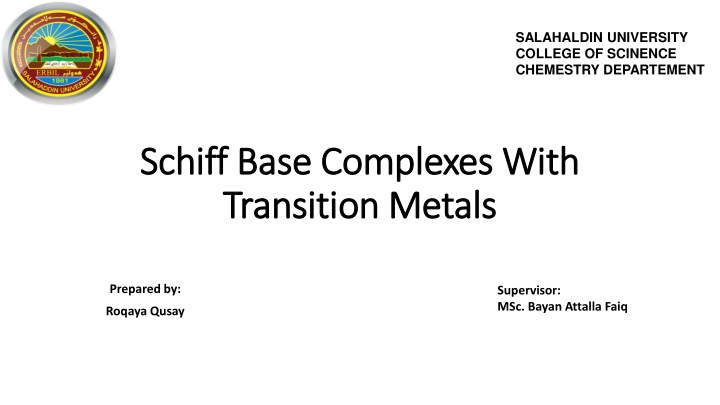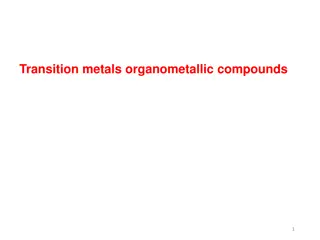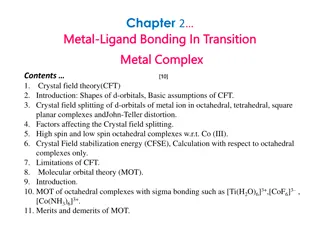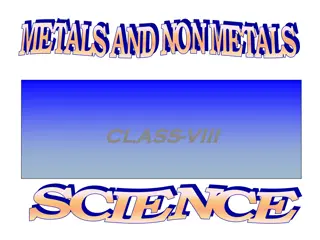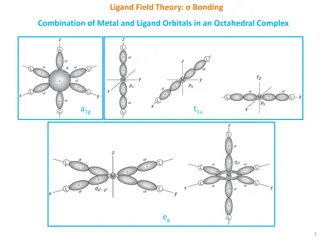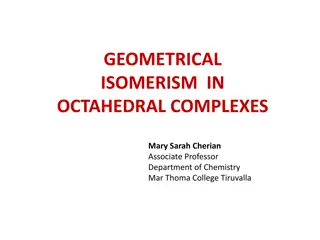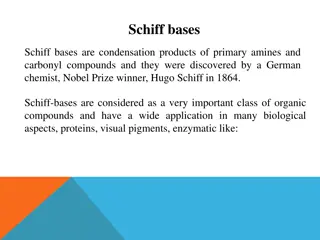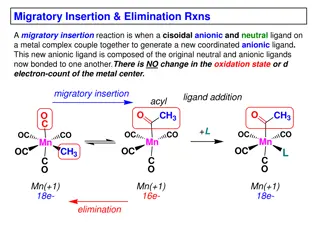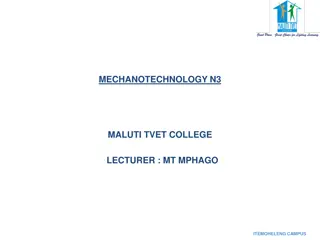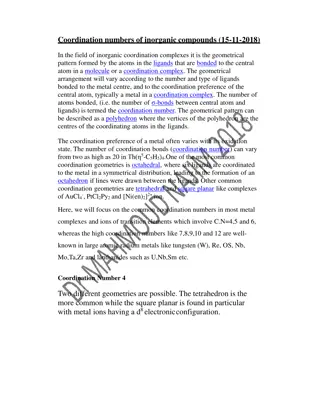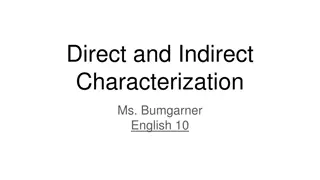Synthesis and Characterization of Schiff Base Complexes with Transition Metals
Hugo Schiff's discovery of imines in 1864 led to the synthesis of Schiff bases, critical organic compounds derived from aromatic amines and aldehydes. These compounds have diverse applications and are extensively studied in the field of chemistry. This article discusses the preparation, synthesis, and characterization of Schiff base ligands and their transition metal complexes, such as Cu(II), Ni(II), Co(II), Mn(II), Zn(II), VO(IV), and Cd(II).
Download Presentation

Please find below an Image/Link to download the presentation.
The content on the website is provided AS IS for your information and personal use only. It may not be sold, licensed, or shared on other websites without obtaining consent from the author.If you encounter any issues during the download, it is possible that the publisher has removed the file from their server.
You are allowed to download the files provided on this website for personal or commercial use, subject to the condition that they are used lawfully. All files are the property of their respective owners.
The content on the website is provided AS IS for your information and personal use only. It may not be sold, licensed, or shared on other websites without obtaining consent from the author.
E N D
Presentation Transcript
SALAHALDIN UNIVERSITY COLLEGE OF SCINENCE CHEMESTRY DEPARTEMENT Schiff Base Complexes With Schiff Base Complexes With Transition Metals Transition Metals Prepared by: Supervisor: MSc. Bayan Attalla Faiq Roqaya Qusay
Introduction Hugo Schiff reported the first synthesis of imines or azomethine in 1864, introducing a new class of organic compounds. Schiff bases is organic compound derived from aromatic amines and aromatic aldehydes are a very important class of organic compounds because of their applications in many fields.
Preparation of ligand 1. Preparation, spectral characterization and biological applications of Schiff base ligand: Most of the Schiff bases are easily synthesized by using simple synthetic procedures with the reaction of an amine and a carbonyl compound. In coordinate chemistry, a lot of Schiff bases can act as ligands.
2. Synthesis and characterization of Schiff base from salicylaldehyde and thiohydrazone and its metal complexes: The ligand salicylaldehyde & thiohydrazone was synthesized & characterized by elemental analyses & IR spectra.
3. Synthesis and characterization of Schiff base transition metal complexes: Many metal complexes of Cu (II); Ni (II); Co (II); Mn (II); Zn (II); VO(IV) and Cd (II) have been synthesized from the Schiff base (L) derived from 4-amino antipyrine, salicylaldehyde and O-phenylene diamine.
Preparation of complex 1. Preparation and spectroscopic investigation of a Schiff base metal complexes: A metal complexes of Cr (III) and TiO (IV) ions with a Schiff base derived from salicylaldehyde and urea have been investigated.
2. Synthesis and characterization of some transition metal complexes: The complex synthesized from 1,10- phenanthroline and 2,2 - bipyridine mixed-ligand [Co(bpy)(phen)2] (NO3)2.2H2O
3. Synthesis and characterization of Schiff base salicylaldehyde and thiohydrazone and its metal complexes: The ligand salicylaldehyde and thiohydrazone was synthesized &characterized by elemental analyses, IR spectra. Its metal complexes with the metals Ti (III), V (III), VO (IV), Co (II) and Mn (III) were synthesized &characterized by the determination of MP, molar conductance and magnetic susceptibilities.
4. Synthesis of metal complexes Fe (II), Co (II), Ni (II) of monodentate Schiff bases derived from aromatic aldehyde: synthesize the Fe (II), Co (II) and Ni (II) metal complexes of Schiff bases produced from condensation of 1-Naphthyl amine hydrochloride with benzaldehyde or naphthalene-1-carbaldehyde.
5. Cu (II) and Ni (II) complexes of Schiff base: Synthesis, characterization and antibacterial activity: Cu (II) and Ni (II) metal ions complexes of Schiff base derived from the condensation reaction of appropriate amount of ethane-1,2- diamine, Salicylaldehyde and 2-furfuraldehyde in alcoholic medium.
Reference Archana Saxena, Synthesis and characterization of Schiff base salicylaldehyde and thiohydrazone and its metal complexes , Pelagia Research Library , 2013, 4(4), pp.152-154. Dr. A. Xavier and N. Srividhya, Synthesis and Study of Schiff base Ligands , Journal of Applied Chemistry , 7(11), (Nov. 2014), PP 06-15. Eliot, A. C , Schiff base ,"Pyridoxalphosphateenzymes: Mechanistic, Structural, and Evolutionary Considerations". 2004 .73: 383 415.
Reference F.A. Abdlseed and M.M. El-ajaily, Preparation and spectroscopic investigation of a Schiff base metal complexes International Journal of PharmTech Research , Vol.1, pp 1097-1103, Oct-Dec 2009. Hanan Abd El-Latif Ibraheem, SYNTHESIS AND CHARACTERIZATION OF SCHIFF BASE TRANSITION METAL COMPLEXES Journal of Al-Nahrain University , 12 (4), December2009, pp.1-6. Hayder Hameed AL-Hmedawi , Synthesis and Characterization of some Transition Metal Complexes via Schiff Bases Derived from Dithiooxamide and Selective Aldehydes, Scholars International Journal of Chemistry and Material Sciences ,2013 ; 4(5), pp46-53.
Reference Lena Radwan, Synthesis of Metal Complexes Fe(II), Co(II), Ni(II) of Monodentate Schiff Bases Derived from Aromatic Aldehyde , Chemistry and Materials Research , 8, 2016. Musarat Farjana Yesmin, Md. Sajjad Hossain, Saiyad Nasira, Nayon Uddin, Md. Ashrafuzzaman, Md. Masuqula and Laila Arjuman Banu, Cu (II) and Ni (II) Complexes of Schiff Base: Synthesis, Characterization and Antibacterial Activity , International Journal of Advanced Research in Chemical Science (IJARCS) , 7(1), 2020, PP 9-15. Shiva Prasad Koller, M.N. Nagendra Prasad, S. Chandrashekar and Muneera Begum, Preparation, spectral characterization and biological applications of Schiff base ligand and its transition metal complexes, Results in Chemistry ,1, January 2019.
